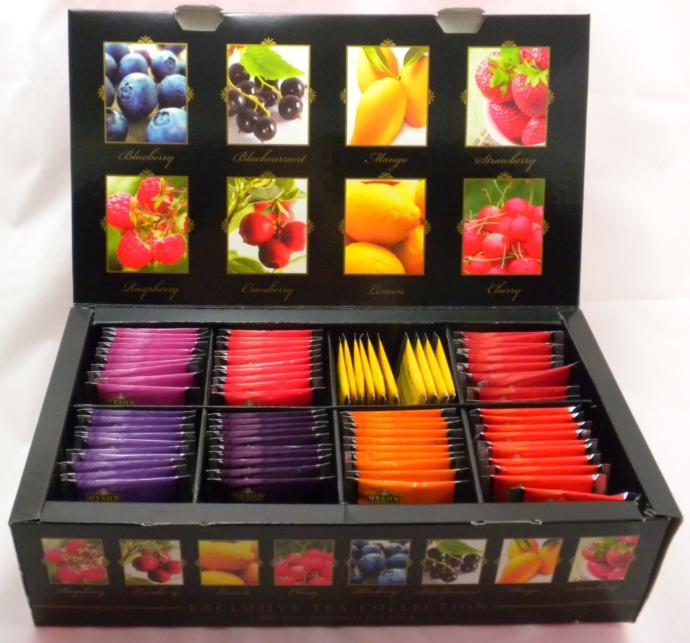
What makes black tea black, green tea green, mint tea minty and floral tea so floral? Find out here in Herbal Teas, Part 3.
BLACK vs GREEN TEA

Black tea is the most common type of tea in the Western world. It is noted for its full flavor and it pairs well with many Western foods, particularly sweets and creamy foods. For this reason, black teas are popular for afternoon teas.
Tea becomes "black" tea through the process of full- or almost full- oxidation. Typically, black tea is rolled or crushed with machines to release its natural oils, which react with oxygen in the air to change the aroma and flavor of the tea leaves. When oxidation is complete, the tea is heated and dried to halt the oxidation process. Richer, deeper flavor nuances develop during oxidation with tannins, citrus, malt, and even chocolate undertones emerging in the finished brown-black leaves.
Green tea is simply tea that has NOT been oxidized.

Japanese green teas are usually steamed while Chinese green teas are processed using dry heat. Since they are not oxidized, they also have less caffeine developed in their chemistry.
Oolong tea- being partially oxidized- is somewhere in between black and green teas in strength, flavor and caffeine content.
Whereas green tea is unoxidized and black tea is fully or almost fully oxidized, oolong tea is partially oxidized. It is rolled by hand or machine (to bring the essential oils to the surface for oxidation) and pan-fired or otherwise heated and then allowed to oxidize. This process is repeated over and over until the desired level of oxidation is reached. Many oolongs are roasted after they have been oxidized in order to further develop their aromatic profiles.
Depending on their processing,- ( and there is lot of room between no oxidation and full oxidation to develop different flavors) oolongs are more likely to have have undertones of orchids and other flowers, lychee and other fruits, honey, butter or cream, coconut and/or vanilla. Arguably, oolongs have a more complex flavor profile than its black or green tea cousins.
THE CHEMISTRY OF TEA FLAVORS

Don't worry: once you learn just ONE word and ONE pattern, this will all start to make sense! I promise!
The flavors and fragrances found in teas are from the essential oils in the particular fruits, seeds, flowers or leaves from which that tea is made. And the major constituents of essential oils that create the profile of that herbal tea are called TERPENES. (There's that one word.)
Terpenes are the major constituents of essential oils derived from plants used to make tea, scent cosmetics, etc. Terpenes can be divided into groups based on the number of isoprene units (each isoprene being a C5H8 molecular group) each contains. Each plant may contain from several on up to hundreds of terpenes, although one or two usually predominate and provide the basic characteristics of the essential oil of that plant, and therefore, the teas made from that plant.

For example, if a plant oil smells “minty”, it probably contains some amount of menthol. Menthone and menthene may also help shape the profile of "mint". As you may have already noticed, the names of specific terpenes are usually derived from the name of the plant PRODUCING that terpene, ie., thymol from thyme, pinene from pine, geraniol from geranium, etc. (There's that one pattern.) Here are some common plants- many of which provide a basis for an herbal tea- and a list of their predominant terpenes which shape their flavor profiles.

See? I told you it would make sense.
Now that you have gone through all three MyTakes on the benefits, types and flavors of herbal teas, relax with a soothing cup of your favorite!

 Holidays
Holidays  Girl's Behavior
Girl's Behavior  Guy's Behavior
Guy's Behavior  Flirting
Flirting  Dating
Dating  Relationships
Relationships  Fashion & Beauty
Fashion & Beauty  Health & Fitness
Health & Fitness  Marriage & Weddings
Marriage & Weddings  Shopping & Gifts
Shopping & Gifts  Technology & Internet
Technology & Internet  Break Up & Divorce
Break Up & Divorce  Education & Career
Education & Career  Entertainment & Arts
Entertainment & Arts  Family & Friends
Family & Friends  Food & Beverage
Food & Beverage  Hobbies & Leisure
Hobbies & Leisure  Other
Other  Religion & Spirituality
Religion & Spirituality  Society & Politics
Society & Politics  Sports
Sports  Travel
Travel  Trending & News
Trending & News
Most Helpful Opinions